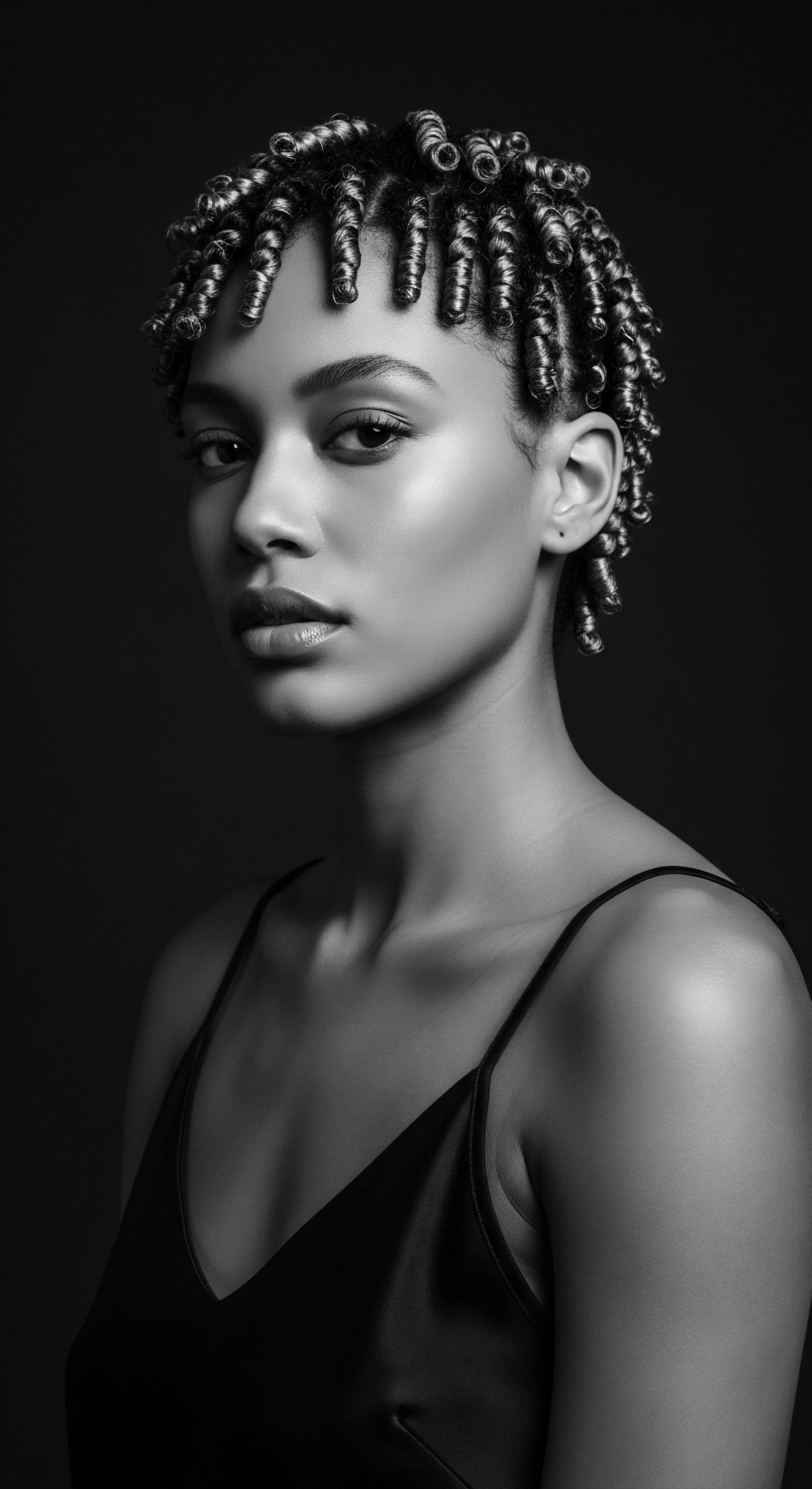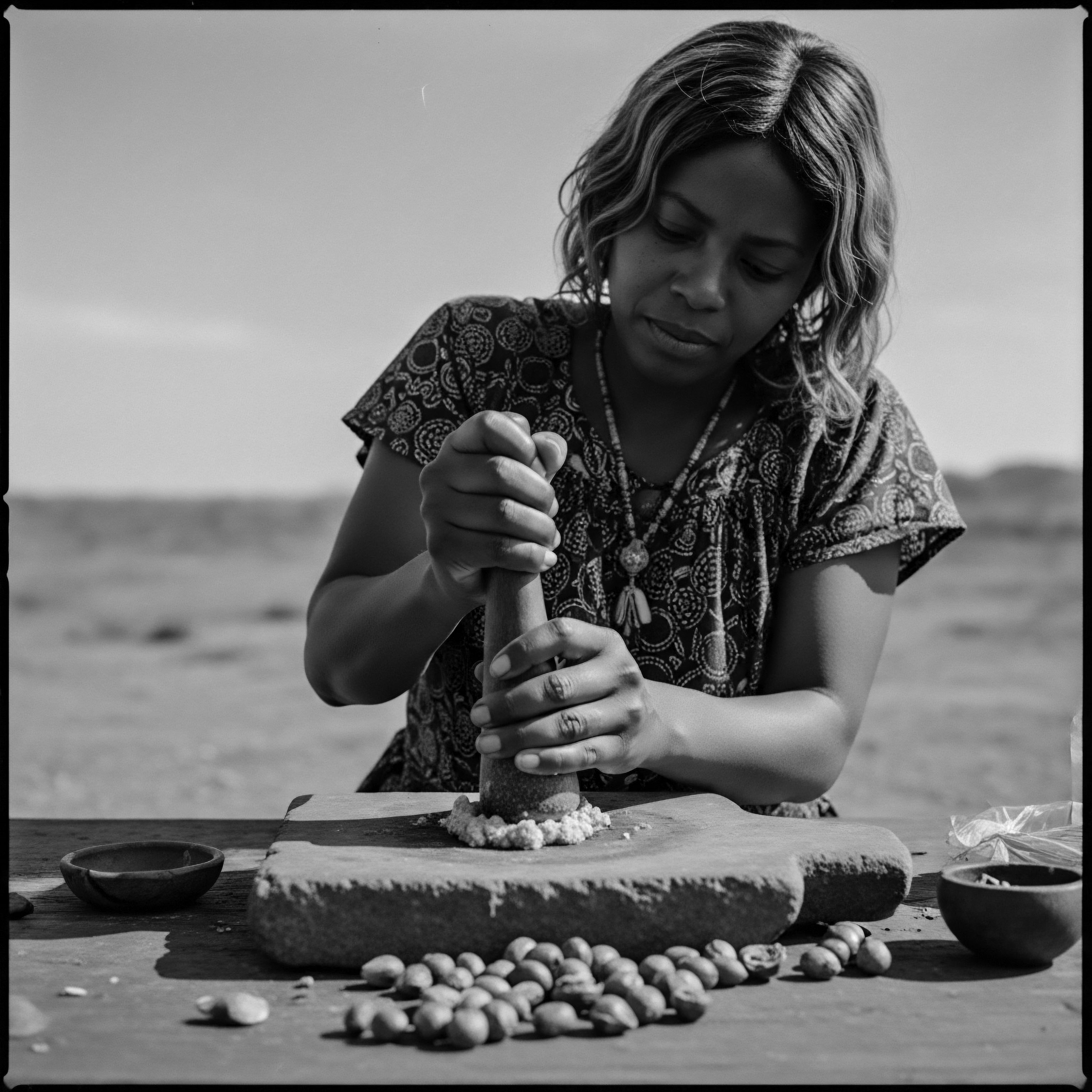
Humidity Hair
Meaning ❉ Humidity hair describes hair's reaction to atmospheric moisture, a significant aspect of textured hair heritage, impacting its form and feel.

What traditional ingredients protect textured hair from humidity?
Traditional ingredients like shea butter and coconut oil protect textured hair by sealing moisture, a legacy of ancestral care.

Humidity Effects
Meaning ❉ Humidity Effects describe hair's physical alterations due to atmospheric moisture, a phenomenon rooted in keratin's water interaction and shaped by ancestral hair care.

